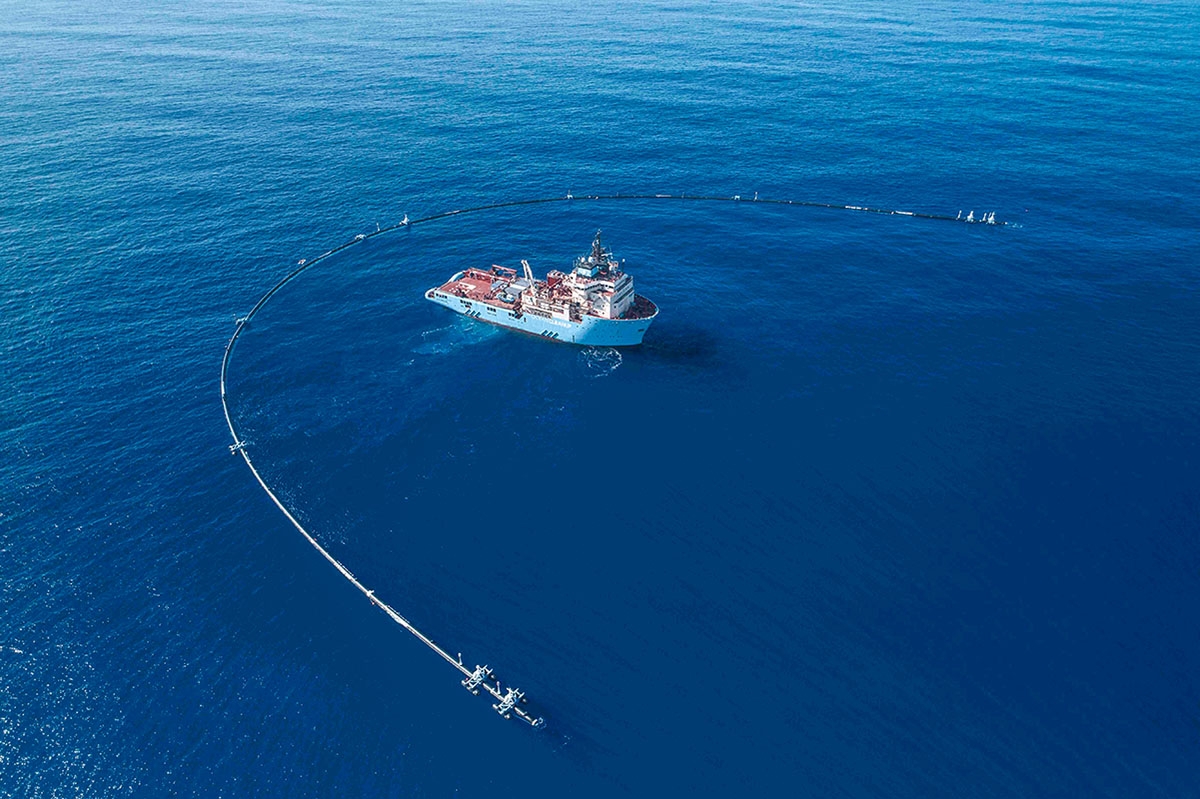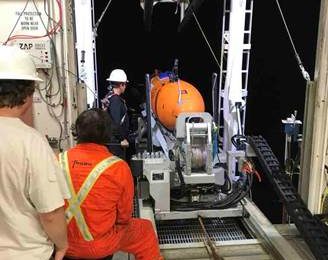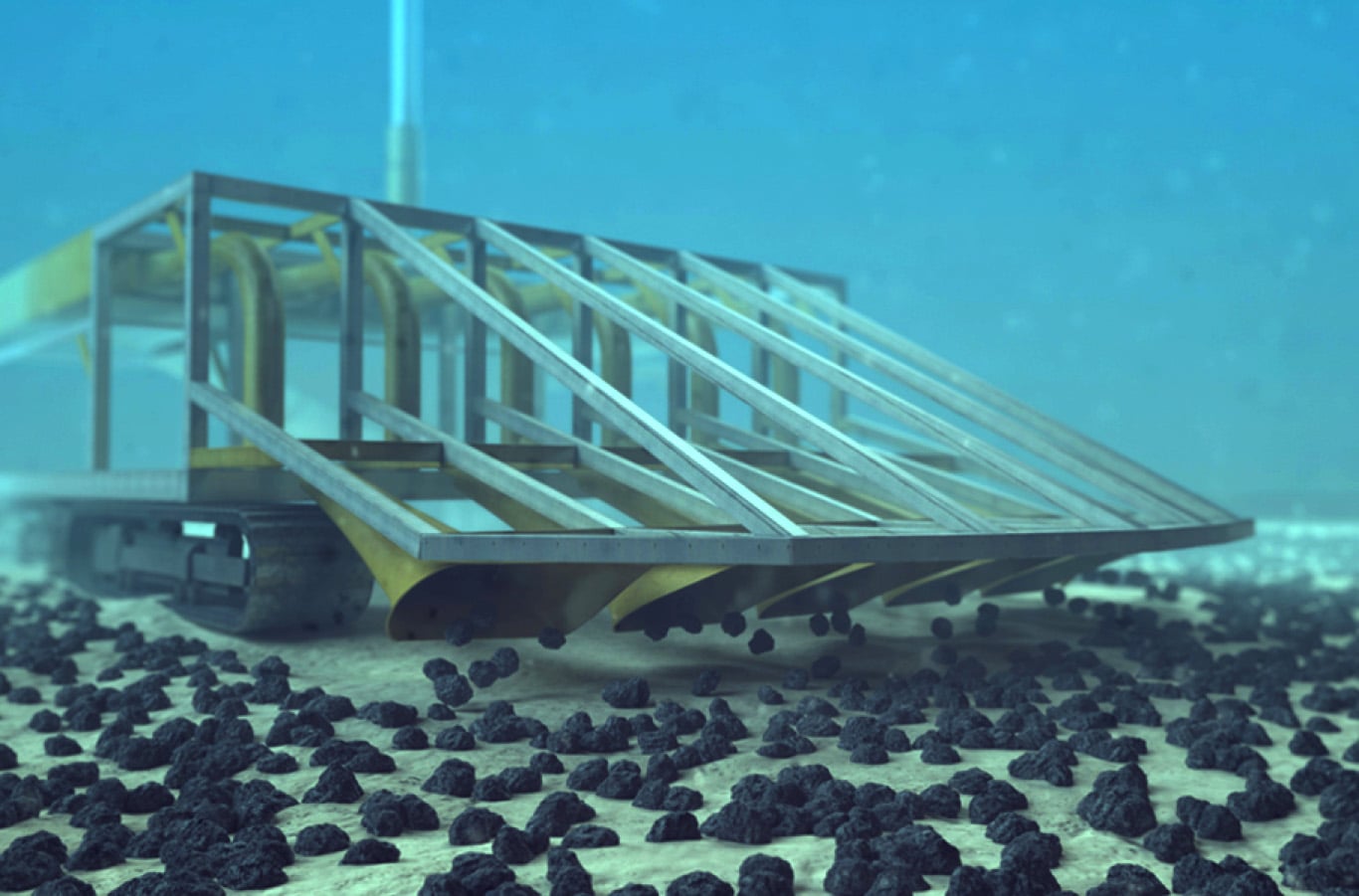“This is an electric vehicle battery,” Gerard Barron exclaims as he holds a fist-size nodule, dark and lumpy, up to the screen. For Barron, CEO of DeepGreen Resources, harvesting polymetallic metals from the seafloor is not just a new mining venture, it is a mission to transition away from fossil fuels into a new, green economy. “The new engine is the battery,” and polymetallic nodules, he explains, contain almost every metal and mineral needed to build the next generation of high-capacity batteries.
DeepGreen is a relative newcomer to the deep-sea mining world, where companies like Lockheed have been exploring the potential of polymetallic nodule mining for decades. Founded in 2011, DeepGreen has exploration leases in the Clarion-Clipperton Fracture Zone, where they are currently conducting seafloor surveys, both to assess the value of their nodule fields and to understand the potential environmental impact.
DeepGreen is in the midst of an ambitious series of research campaigns in conjunction with their subsidiary, Nauru Ocean Research Inc., as well as their vessel provider, Maersk Supply Service. In part, the research is to help prepare the Environmental Impact Statement required by the International Seabed Authority before they can advance to an exploitation license. Among the suite of environmental and oceanographic monitoring systems to be deployed to help provide better clarity on current regimes and species dispersal within the Area, DeepGreen will also be deploying hydrophones to characterize marine noise in the CCZ.
Though planned long before the recent study on potential beaked whale gouges in the CCZ, Dr. Samantha Smith, Head of Environment and Social Performance for DeepGreen, notes that the hydrophone arrays will be able to detect if beaked whales are active within their lease blocks. Ocean noise is not well understood in the high seas, and Dr. Smith notes that, to the best of her knowledge, DeepGreen is the first mining company in the CCZ to attempt long-term hydrophone deployments.
DeepGreen recently made headlines by partnering with the Ocean Cleanup to deploy their plastic collecting boom in the northeast Pacific. Barron saw it as a natural partnership. “You don’t see carbon pollution,” says Barron. “You do see plastic.” Barron views ocean plastics and climate change as two aspects of the same problem: a terminal reliance on fossil fuels.
Deep-sea mining, particularly polymetallic nodule mining, has a long history of grand promises and limited production. The last decade has seen concrete steps towards seafloor extraction, with the commodities market and the regulatory environment climbing towards financial viability. The price of cobalt, one of the main indicators for deep-sea mining investors, peaked this summer, it has since fallen back to where it was at the beginning of the year. Though they watch these fluctuations carefully, DeepGreen isn’t concerned with short-term price variability, the future projections for cobalt, as well as other critical metals, remains strong.
It is an important moment for deep-sea mining, with stakeholders working to create a system that provides stability and commercial viability for the contractors while implementing sound environmental management practices. The ISA is working towards their draft regulations for exploitation in the Area and DeepGreen is involved in that process. While deep-sea mining is often characterized as a seafloor gold rush, Dr. Smith cautions that the process of establishing a seafloor mine is actually very slow.
“We’re trying to move an economy away from fossil fuels,” says Barron, and he sees polymetallic nodules as a transitional resource in achieving that goal. To ultimately reach a closed-loop system, where metals are cycled through the economy rather than extracted and then disposed of, we need a larger supply of base metals. He sees nodule mining as a less destructive way to reach that point. Polymetallic nodule mining on the high seas has fewer environmental and social concerns than terrestrial mining and the nodules contain almost the exact minerals needed to make progress towards that closed-loop resource economy.
It is rare to hear the CEO of a mining company describe, as part of their long-term vision, the obsolescence of their own industry, but DeepGreen has a fundamentally different vision for the future of resource extraction.





